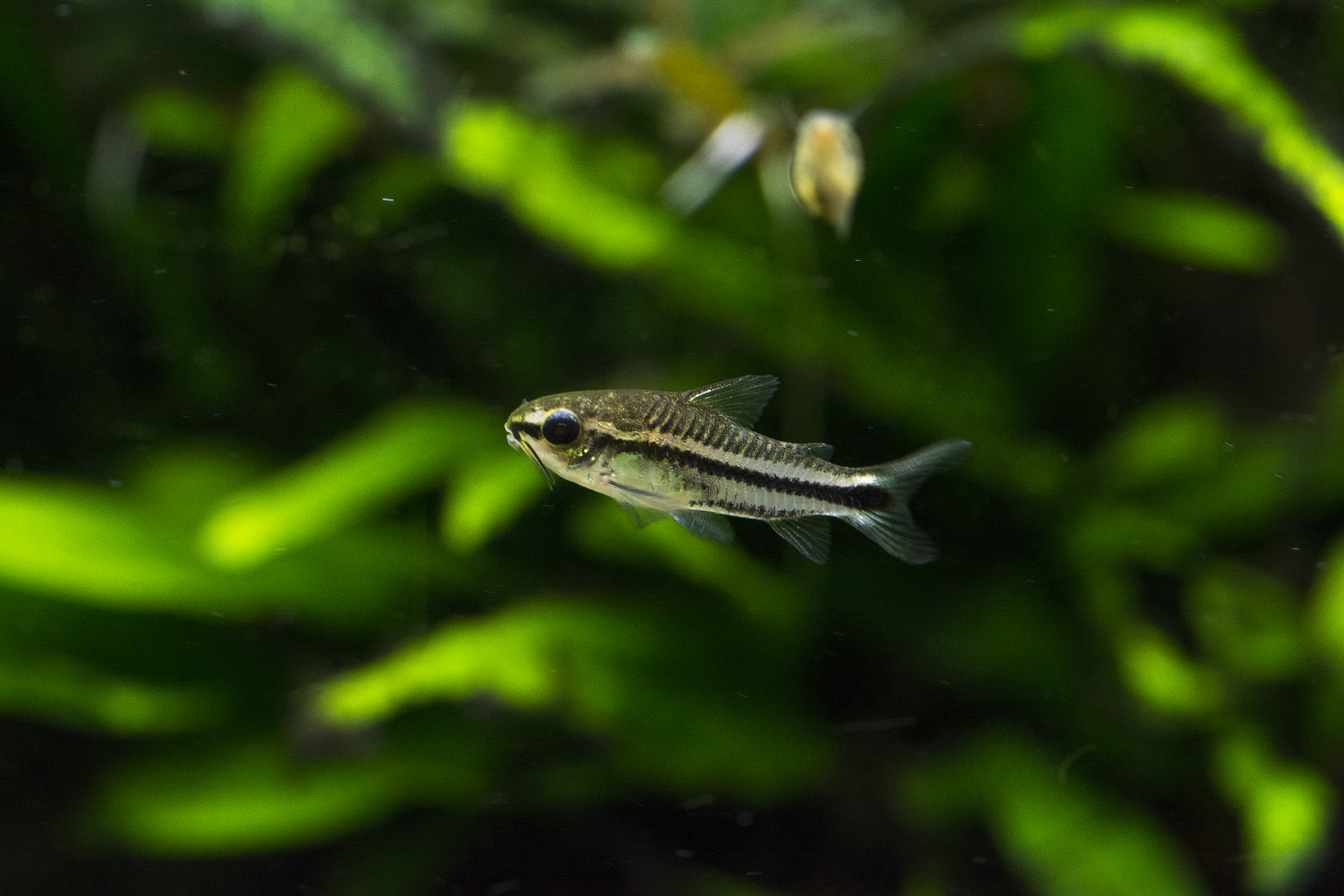The Pygmy Cory (Corydoras pygmaeus) – fish for a small aquarium
Is it possible to enjoy the amazing view of Corydoras when you have a small aquarium? Well, yes. Corydoras include also small fish species that are perfect for small tanks! Such a small species is the Pygmy Corydora (Corydoras pygmaeus), also known as Pygmy Cory, Pygmy Catfish or dwarf Corydora.
How many Corydoras can you keep in one aquarium?
Pygmy cory (Corydoras pygmaeus), as well as other species of Corydoras, are flocking fish. Therefore, it is best to keep them in groups of at least 6 individuals. They will feel good in a tank of at least 30-40 liters. However, due to their small size (growing up to about 2.5 cm long), it is better to opt for a larger stock.
These fish are happy to swim together. Although they are bottom-dwelling fish, they can be often seen swimming in the middle part of the aquarium, or resting motionless on plants. Interestingly, thanks to their highly circulated gut Corydoras can breathe atmospheric oxygen. They can sometimes be seen swimming up to the surface of the water to swallow an air bubble.
How to prepare an aquarium for a Pygmy Cory?
In the wild, the Pygmy Cory (Corydoras pygmaeus) inhabit the flowing waters of the Rio Madeira basin in Brazil. In general, the entire genus Corydoras is known for their liking for flowing water, which is something to keep in mind when arranging the tank. The water in the aquarium with Corydoras must be clean, changed frequently, and the filter, preferably with an air diffuser, should provide clear water movement.
You can also keep Corydoras in planted aquariums with an active substrate. Although they love to dig through the substrate in search of food like other species of Corydoras, they are too small to stir up active substrate and thus pollute the water. In other cases it is advisable to use fine sand as a substrate in the aquarium or to create a sandy beach for them. But remember to avoid substrates made of materials with sharp edges, which can cause mouth abrasions and lead to infection.
You can use roots, oak leaves, ketapang and alder cones as decoration to create a black water aquarium, or keep them in a typical planted aquarium. Corydoras don’t like too bright light so you should consider floating plants.
Pygmy catfish feel good in water of temperature between 22 – 26oC, hardness of 5–15°dGH and pH of 6.4–7.4.
Companions for pygmy catfish
Due to their activity and calm nature, Corydoras often frequent residents of multi-species aquariums. However, in the case of Corydoras pygmaeus, as well as other small species (Corydoras hastatus and Corydoras habrosus), a good care must be taken to selection of appropriate stock. These are small fish, so other large and active species may dominate them, or in the worst scenario, eat them. Perfect mates would be for example: lambchop rasbora (Trigonostigma espei), galaxy rasbora (Danio margaritatus), Endler’s livebearer (Poecilia wingei) or least killifish (Heterandria formosa).
What do Corydoras eat?
Do not treat Corydoras as tank cleaning service, but as fully-fledged aquarium inhabitants, which should receive high quality foods. The diet of dwarf corys is based on small invertebrates. In the aquarium, you can feed them with chopped or small live and frozen foods, as well as granules or tablets, such as: Nanovit Granulat, Supervit Mini Granulat, Pro Defence XXS.










